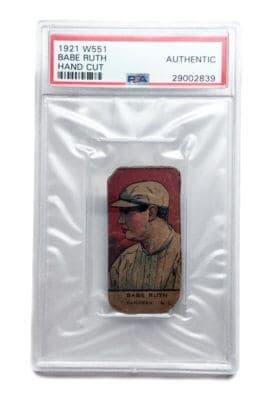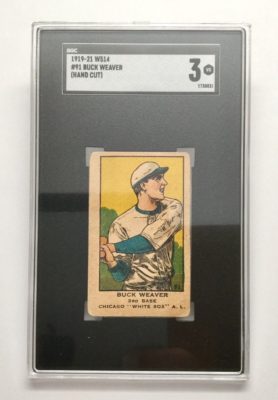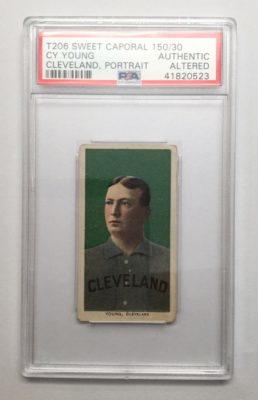TRADING CARDS - WHAT WE BUY
Pre-War Trading Cards
Trading cards printed prior to 1939 are described as Pre-War era trading cards. These cards are highly sought after by collectors today, although ironically were originally under appreciated. Pre-War trading cards were more of a novelty originally packaged with assorted candy such as caramels or gum, cigarettes, or given out as a thank you by small business owners to patrons who frequented their establishments. The United States was still deep in financial depression and these cards were another gimmick to cheer people up and give them something else to focus on. The subjects of these cards ranged from prominent sports figures of the day such as Babe Ruth, Jack Dempsey, and Ty Cobb to past United States Presidents to glamoures movie stars. Other subjects of cards from this time period included outlaws and famous native Americans from the old wild west, pirates, and military powers of the world along with various battle scenes.
3rd Party Graded Cards: Currently, the top three respected grading card companies are PSA (Professional Sports Authenticators), SGC (Sports Card Guarantee), and BGS (Beckett Grading Services). These companies evaluate trading cards on a 1-10 grading scale, with 10 being the highest possible certifying that without a doubt that card is of the gem mint pedigree.
The criteria which the grading is based off of consists of the following:
- Centering: The closer the borders of a trading card are to 50/50 compared with the subject of the card, increases the cards chances of a higher grade. A cardmay be perfect otherwise, but if the cards centering is not at least 75/25 a card can grade no higher than a 7/10 which is considered near mint. To most collectors and dealers alike centering is one of the most important characteristics of a card.
- Surface: The surface of a card is also very important. Any blemishes, indentations, staining, creases, or anything else that subtracts from the visual eye appeal of a card will hinder the grade greatly. If the obverse of a trading card has great eye appeal with little to no wear, but the reverse has soiling or other surface damage the highest grade achievable would be a 5/10 or EX (excellent).
- Corners: Corners of most trading cards should be razor sharp at a perfect right angle. A few exceptions to this rule include the following: Magic: The Gathering, Pokemon, and Yu-Gi-Oh! trading cards. These cards were printed with rounded corners which enables achieving higher grades more easily than the average trading cards. The more rounded the corners are the harder it is to move up on the grading scale. If corners have begun to split so individual fibers can be seen this further hurts the value of a trading card. In order to achieve a grade of an 8/10 NM/MT (near mint-mint) or better corners must be nearly perfect.
- Edges: Finally, last but certainly not least, the edges of a card must be crisp. If a card has any chipping, warping, tearing, or any other negative factors taking away from eye appeal on the edges of the card it will lower a cards overall grade.
Note: Each of these four factors are taken into careful consideration and an average of these sub-grades will then dictate what grade the card receives. These companies will also have 2-3 graders or more grade the same card to be sure cards receive the grades they deserve. The cards are then encapsulated in tamper proof slabs with a description of the card and its grade. Cards that have already been professionally graded by one of the three top graders mentioned earlier will receive significant premiums. Submitting cards can be very expensive and we understand that when we are making offers. If cards have not been professionally graded, our in house grader will grade your cards on the same scale using the same in depth criteria that the other three houses use before an offer is made. We will never under value your investment and waste your time with low ball offers.



